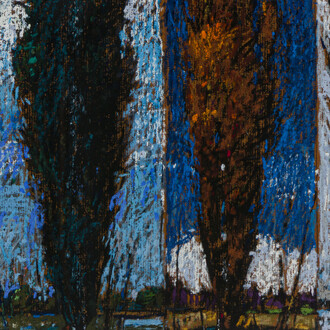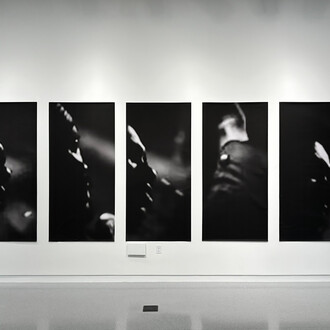We run out of time, hold onto it, or feel it slipping away—but time does not pass; we pass through it, growing, decaying, and eventually dying. When that happens, our time is over. So, we try to slow it through memory, accelerate it through longing, and wish to freeze it altogether when faced with loss. Nostalgia is nothing more than an attempt to suspend entropy—to resist the inevitability of disappearance.
Tempus fugit is Rebecca Shapass’s first solo exhibition and is comprised of a film installation and a spatial intervention in the adjacent room. The title is a well-known quote from Vergil’s Georgics and translates from Latin into time vanishes. It evokes the urgency of holding onto what is slipping away: those we love, the lives we live, and the traces they leave behind—and within—us.
The film and the installation play with horror, not as genre, but as a method: ghostly presences emerge not from what is seen, but what is felt. They unfold around the desire to preserve a decaying space, guiding us into a house frozen in time, which is maintained in the stillness of its décor, taste, and temporality. Nothing has been moved since the person who lived there passed away.
Can we keep something as it was, or are we clinging to what must inevitably vanish, despite our efforts to preserve it? Shapass poses these questions while contemplating the traces of that haunted house, extending her reflection to the scientific response humans devised to defy decay: cryonics, the practice of preserving a deceased body at extremely low temperatures in the hope of future revival when medical technology will advance to the point where they could be restored to health.
Alongside footage of a cryonics facility, Shapass juxtaposes images of rot: worms turning soil, decomposition at work. Like a visual memento mori, the film reminds us that decay may not be an end, but a phase of transformation—that any attempt to delay it merely pauses a tempo the universe insists upon.
Quoting Jungian analyst Stanton Marlan, Shapass looks at putrefaction as a gateway to light, where the worm - agent of decomposition—becomes the magician. The film ends with quiet metamorphosis. The camera watches the traces of the past being carried into a new life.
We do not preserve things to remember but to delay forgetting. Even if cryonics halts the body, memory - like time – rots, beautifully. And in that rot, something else begins. Not a return, but a becoming.
(Text by Irene Campolmi)
















